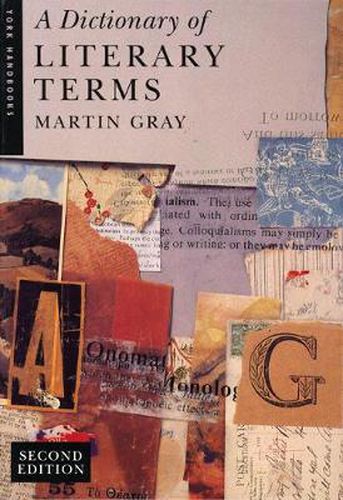Readings Newsletter
Become a Readings Member to make your shopping experience even easier.
Sign in or sign up for free!
You’re not far away from qualifying for FREE standard shipping within Australia
You’ve qualified for FREE standard shipping within Australia
The cart is loading…






What distinguishes realism from ‘classic bourgeois’ realism and magic realism? How does a Shakespearean sonnet differ from a Spenserian or a Petrarchan sonnet? Who were the Cambridge Critics, the Graveyard Poets and the Tribe of Ben?
The answers to these and many other literary questions are provided in this expanded and updated edition of Martin Gray’s much-acclaimed Dictionary. Wide in scope, it explains concepts and topics thatn range from the familiar to the comparativley esoteric and that cover such fields as literary movements (Neoclassicism, Romanticism, Imagism), genres and sub-genres (tragedy, elegy, roman a these), technical language (anapaest, synecdoche, hamartia), and schools of literary theory (structuralism, deconstructionism, feminist criticism). The result is a clear, lively and imformative guide through the bewildering maze of literary terminology, and one that will enhance the reader’s enjoyment of literary studies.
$9.00 standard shipping within Australia
FREE standard shipping within Australia for orders over $100.00
Express & International shipping calculated at checkout
What distinguishes realism from ‘classic bourgeois’ realism and magic realism? How does a Shakespearean sonnet differ from a Spenserian or a Petrarchan sonnet? Who were the Cambridge Critics, the Graveyard Poets and the Tribe of Ben?
The answers to these and many other literary questions are provided in this expanded and updated edition of Martin Gray’s much-acclaimed Dictionary. Wide in scope, it explains concepts and topics thatn range from the familiar to the comparativley esoteric and that cover such fields as literary movements (Neoclassicism, Romanticism, Imagism), genres and sub-genres (tragedy, elegy, roman a these), technical language (anapaest, synecdoche, hamartia), and schools of literary theory (structuralism, deconstructionism, feminist criticism). The result is a clear, lively and imformative guide through the bewildering maze of literary terminology, and one that will enhance the reader’s enjoyment of literary studies.